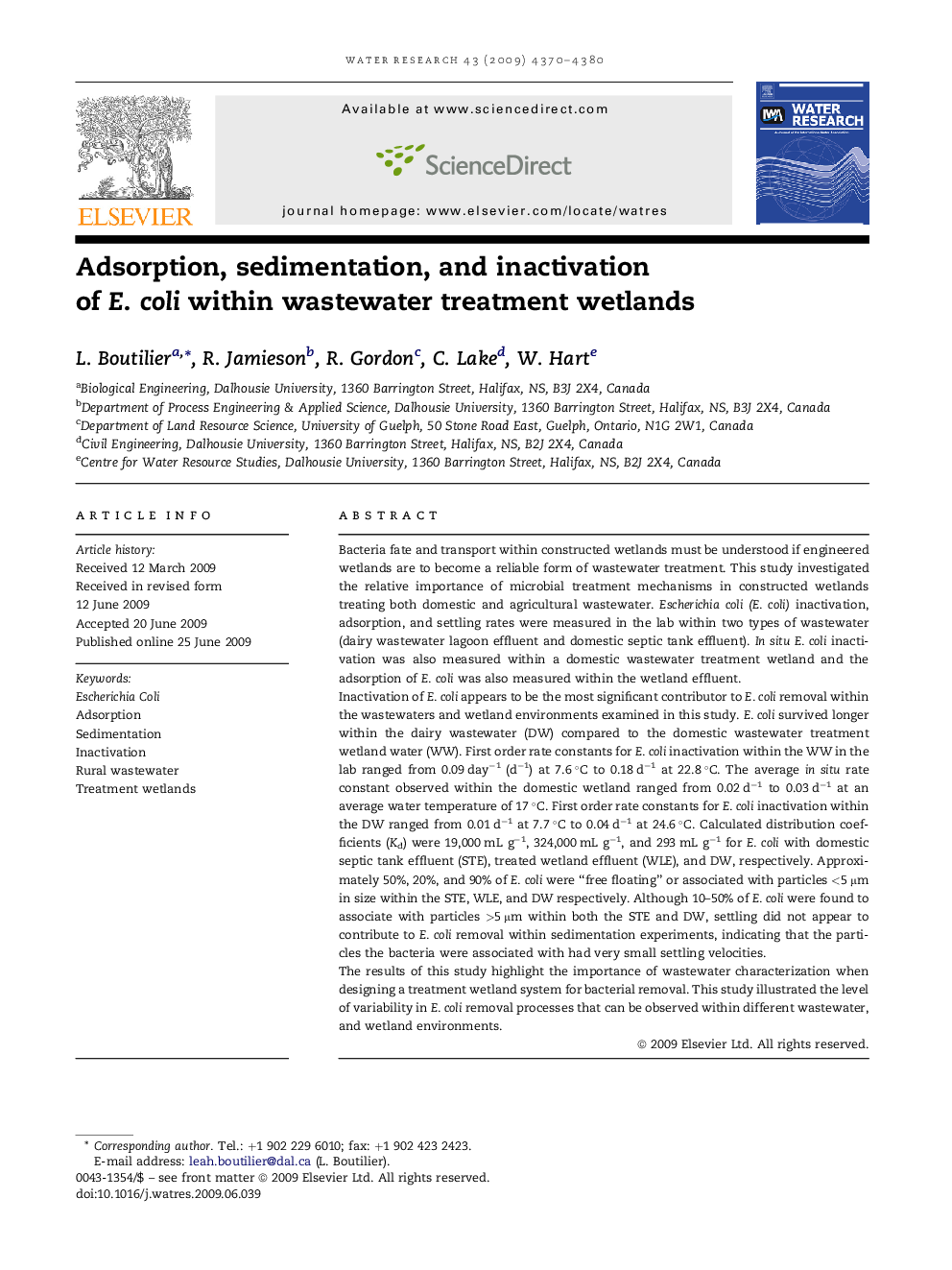| کد مقاله | کد نشریه | سال انتشار | مقاله انگلیسی | نسخه تمام متن |
|---|---|---|---|---|
| 4483983 | 1316905 | 2009 | 11 صفحه PDF | دانلود رایگان |

Bacteria fate and transport within constructed wetlands must be understood if engineered wetlands are to become a reliable form of wastewater treatment. This study investigated the relative importance of microbial treatment mechanisms in constructed wetlands treating both domestic and agricultural wastewater. Escherichia coli (E. coli) inactivation, adsorption, and settling rates were measured in the lab within two types of wastewater (dairy wastewater lagoon effluent and domestic septic tank effluent). In situ E. coli inactivation was also measured within a domestic wastewater treatment wetland and the adsorption of E. coli was also measured within the wetland effluent.Inactivation of E. coli appears to be the most significant contributor to E. coli removal within the wastewaters and wetland environments examined in this study. E. coli survived longer within the dairy wastewater (DW) compared to the domestic wastewater treatment wetland water (WW). First order rate constants for E. coli inactivation within the WW in the lab ranged from 0.09 day−1 (d−1) at 7.6 °C to 0.18 d−1 at 22.8 °C. The average in situ rate constant observed within the domestic wetland ranged from 0.02 d−1 to 0.03 d−1 at an average water temperature of 17 °C. First order rate constants for E. coli inactivation within the DW ranged from 0.01 d−1 at 7.7 °C to 0.04 d−1 at 24.6 °C. Calculated distribution coefficients (Kd) were 19,000 mL g−1, 324,000 mL g−1, and 293 mL g−1 for E. coli with domestic septic tank effluent (STE), treated wetland effluent (WLE), and DW, respectively. Approximately 50%, 20%, and 90% of E. coli were “free floating” or associated with particles <5 μm in size within the STE, WLE, and DW respectively. Although 10–50% of E. coli were found to associate with particles >5 μm within both the STE and DW, settling did not appear to contribute to E. coli removal within sedimentation experiments, indicating that the particles the bacteria were associated with had very small settling velocities.The results of this study highlight the importance of wastewater characterization when designing a treatment wetland system for bacterial removal. This study illustrated the level of variability in E. coli removal processes that can be observed within different wastewater, and wetland environments.
Journal: Water Research - Volume 43, Issue 17, September 2009, Pages 4370–4380